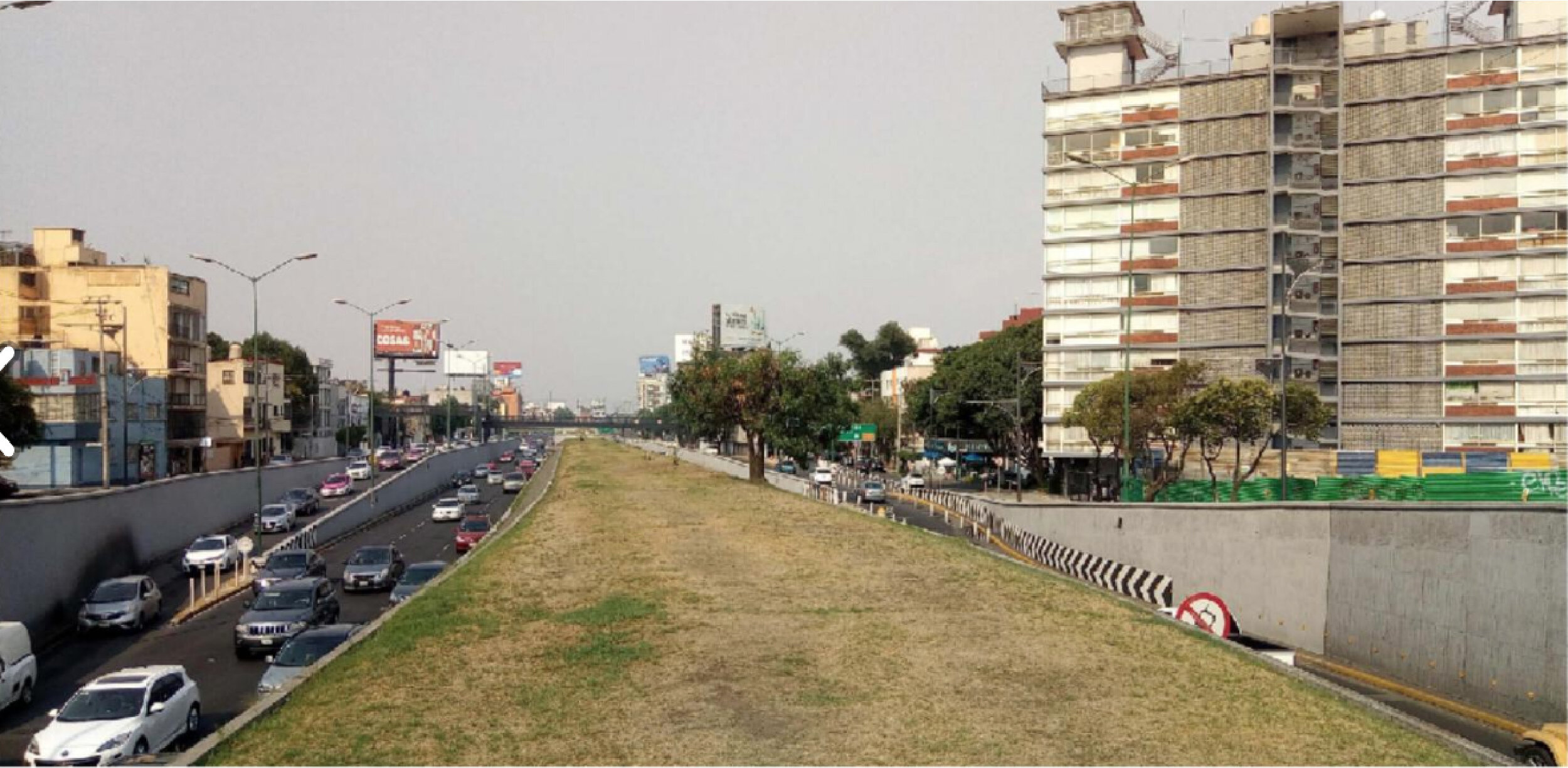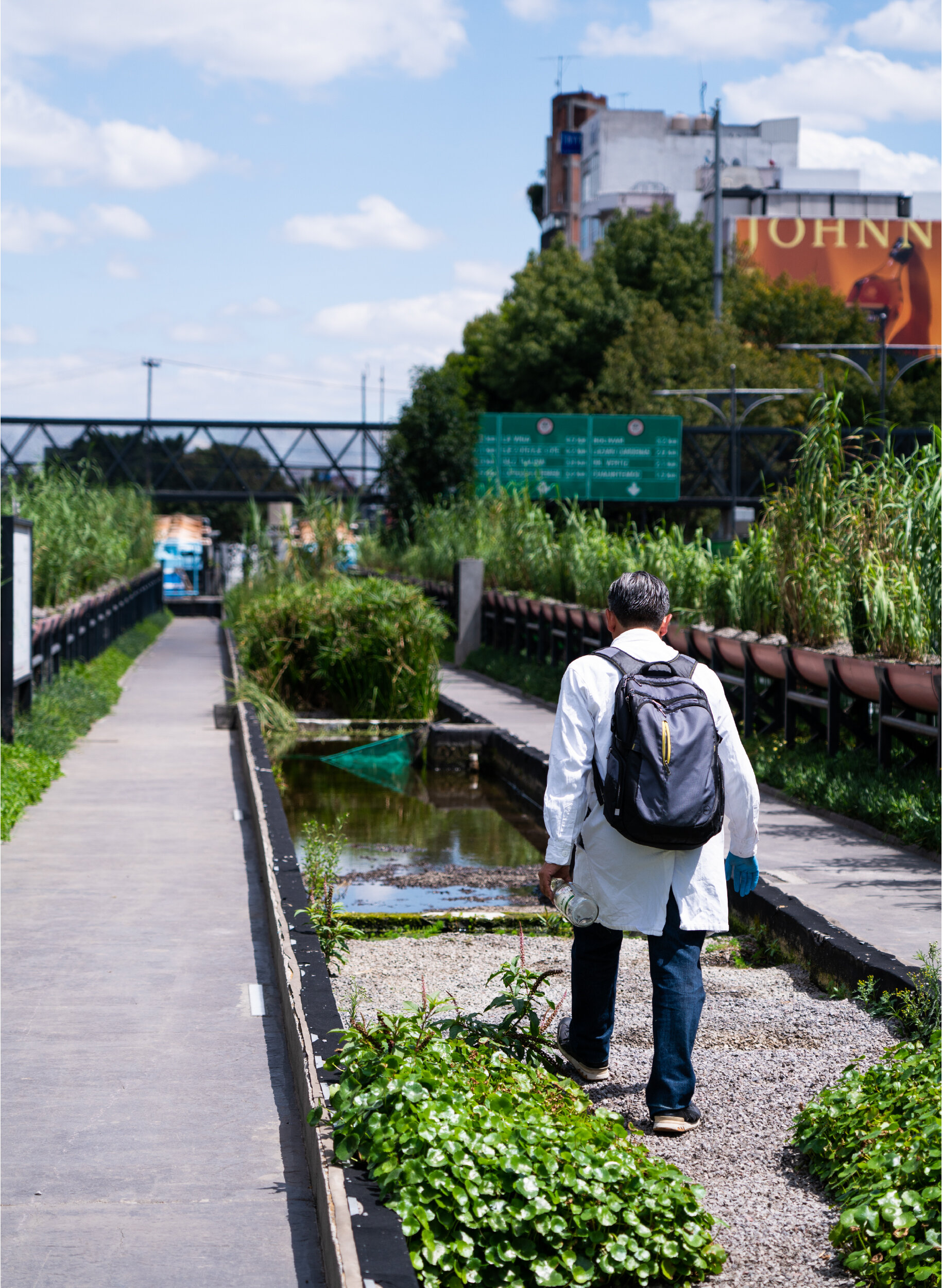Río la Piedad
Location: Mexico City, CDMX
Length: 1,200 feet
Cost: $2.3M
Year: 2018
A six-lane highway turned creek channel, linear urban park, and water filtration system. It turns raw sewage into clean, clear stream water and provides recreation and education opportunities.
Mexico City grew out of the floating city of Tenochtitlán, draining its lakes and pushing its rivers underground. Its uneasy relationship with water guided urbanization. Río la Piedad was encased beneath a six-lane highway—one of the first urban rivers in Latin America to be buried [01]. Taller13, headed by Elias Cattan, led its daylighting at the Ecoducto.
Public interest was gained by impromptu lunches. Community members climbed fences and set up on the concrete median that divided the highway, above the piped river. Their numbers grew as others joined the cause, including Cuatro al Cubo, or Four Cubed—an urban intervention association comprised of activists, community groups, and local businesses [02]. Through significant advocacy, the government finally decided to fund the project.
In 2018, the linear park finally came to life. Dividing the highway, the spaces provides a natural oasis in the heart of Mexico City. Approximately 13,000 people visit every week. Cyclists gained a new protected route through the City. The small-scale and energy-efficient water filtration system filters 30,000 liters of raw sewage pumped from the Río la Piedad every day. The filtration system, designed by Dr. Alejandro Federico Alva Martinez, is gravity-powered and takes little upkeep to run. Vegetation and bacteria filters the water by mimicking a natural riverbed [01].
“If it were up to me, we would open the whole river and have this replicated all over the city. But first, we need to change the relationship of chilangos (Mexico City dwellers) with their environment. This is a good start.”
The project returns nearly $4 million each year in benefits from filtered water, pollution reduction, and public enrichment. Foliage reduced traffic noise by ten decibels. Bird species moved in with plantings—an estimated 17 bird species, up from four previously. Property values near Ecoducto have increased. A gathering space, the Water Pavilion, offers workshops on water treatment, urban farming, and social activism [01].
Sources
Grabinsky, Mexico City’s rivers reborn (2019).
Taller13, Río la Piedad (2017).






